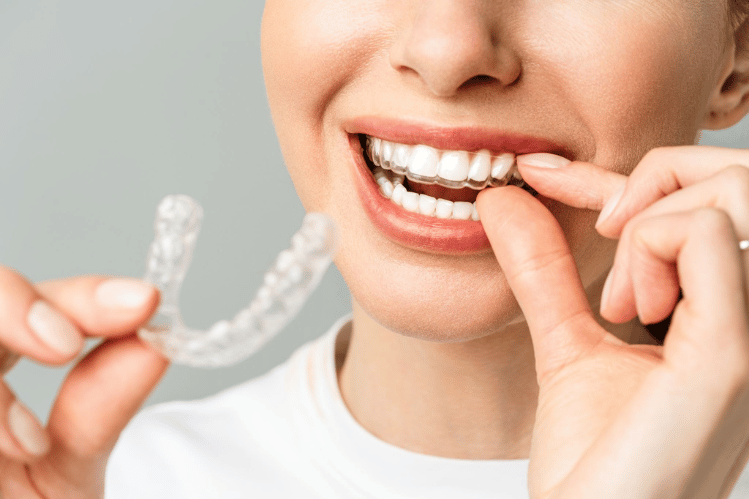The Buzz on Legacy Orthodontics
The Buzz on Legacy Orthodontics
Blog Article
Legacy Orthodontics for Dummies
Table of ContentsThe Facts About Legacy Orthodontics UncoveredThe 10-Second Trick For Legacy OrthodonticsLegacy Orthodontics - The Facts9 Simple Techniques For Legacy OrthodonticsLegacy Orthodontics Things To Know Before You Buy
At Advanced Orthodontics, we offer clients with a alternative treatment experience. Furthermore, we use flexible therapy schedules, flexible settlement options and a fun, satisfying experience. leesburg orthodontist. Telephone call ( 480) 357-4900 today to learn more and timetable a consultation.An orthodontist is a dental professional trained to identify, protect against, and treat teeth and jaw irregularities. They deal with existing problems and are educated to identify issues that might develop in the future. Orthodontists collaborate with individuals of any ages, from children to grownups. Individuals commonly connect a best smile with health.
Malocclusion, or misaligned teeth, can result in oral issues, consisting of tooth degeneration, gum disease, and challenging or painful eating. But not every person is born with straight teeth. If you have a bad bite or huge spaces in between your teeth, you may wish to get in touch with a dental expert specializing in orthodontic treatment.
The Ultimate Guide To Legacy Orthodontics
( Picture Credit Rating: DigitalVision/Getty Images) Orthodontists utilize fixed and detachable oral devices, like braces, retainers, and bands, to transform the setting of teeth in your mouth. Orthodontic treatment is for oral irregularities, including: Jagged teethBite issues, like an overbite or an underbiteCrowded teeth or teeth that are as well far apartJaw misalignmentThe objective of orthodontic therapy is to enhance your bite.
A healthy and balanced bite guarantees you can consume, eat, and talk properly. While you could think of orthodontists as mainly for kids or young adults that need dental braces, they can correct oral troubles at any type of age. Orthodontists attend college, oral college, and orthodontic college. After graduation, they spend 2 or 3 years in an orthodontic residency program.
, yet not all dental practitioners are orthodontists. They concentrate on two areas: Just how to properly and securely move teeth How to appropriately guide advancement in the teeth, jaw, and faceOnce an orthodontist has finished training, they have the choice to become board accredited.
Some Known Details About Legacy Orthodontics
Misalignment, or malocclusion, is one of the most usual reason individuals see an orthodontist. It is genetic and is the result of size differences in between the top and lower jaw or between the jaw and teeth. Malocclusion brings about tooth congestion, an irregular jaw, or uneven bite patterns. Malocclusion is normally treated with: Your orthodontist attaches steel, ceramic, or plastic square bonds to your teeth.
Some people need a headgear to assist relocate teeth right into line with pressure from outside the mouth. A retainer is a custom device that keeps your teeth in area.
They can create additional room in the mouth without having to draw teeth. Orthodontists use wires, surgical screws, or plates to sustain your jaw bone.
You might need to see an orthodontist if you have: Crowding or otherwise sufficient space for all of your teethOverbite, when your top teeth come your bottom teethUnderbite, when your base teeth are too much forwardSpacing or problems with gapsCrossbite, which is when your top teeth fit behind your bottom teeth when your mouth is closedOpen bite or an upright space between your front bottom and top teethMisplaced midline, when the center of your bottom and upper teeth don't align Fixing an oral malocclusion can: Make attacking, chewing, and talking easierImprove the proportion of our face and your total appearanceEase discomfort from temporomandibular joint problemsSeparate your teeth and make them simpler to clean up, assisting prevent dental caries or tooth cavities It's typically a dental expert that first notices misaligned teeth during a regular exam.
Some Of Legacy Orthodontics

During your initial orthodontic examination, you'll likely have: A dental examPhotos taken of your face and smileDental X-raysPanoramic (360 level) X-rays of your face and headImpressions to develop molds of your teethThese examinations will assist your orthodontist understand exactly how to proceed with your treatment. leesburg clear braces. An orthodontist is a dentist that's had training to treat your teeth and jaw
Orthodontists might execute surgical procedure, exams,X-rays,and more to help you acquire an extra comfortable, healthier smile. An orthodontist is focused on your bite, so something like a broken tooth would be handled by a dental expert. Orthodontists are dental practitioners however not all dental experts are orthodontists. Orthodontists are concentrated on your bite, or the way your teeth fit together, and the straightness of your teeth.
Ever wondered exactly how celebs constantly seem to have perfectly straightened teeth? The answer often depends on the proficient hands of an orthodontist. However exactly what does an orthodontist do? Orthodontists are oral experts that concentrate on remedying irregularities in the teeth and jaws. Their competence surpasses just creating a gorgeous smile; it includes improving your overall dental health and wellness and feature.
A Biased View of Legacy Orthodontics

While dental braces are one of the most frequently recognized orthodontic treatment, orthodontists have a diverse toolkit at their disposal. The specific approach picked relies on the extent of the case, the patient's age, and private preferences. These tried-and-true braces use a system of brackets bonded to the teeth and linked by wires.
Clear aligners, like Invisalign, are a popular choice for individuals seeking a much more very discreet treatment alternative. These removable trays are tailor-made to progressively shift the teeth's setting. Headgear may be used combined with dental braces or aligners to use extra targeted pressures, especially for fixing jaw discrepancies. In situations of narrow jaws, palatal expanders can be utilized to create room for correct tooth alignment.
Report this page